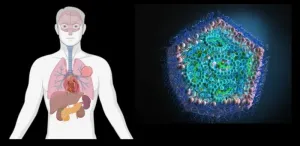(Press-News.org)
Communities exposed to drinking water contaminated with manufactured chemicals known as per- and polyfluoroalkyl substances (PFAS) experience up to a 33% higher incidence of certain cancers, according to new research from the Keck School of Medicine of USC.
The study, funded by the National Institutes of Health and just published in the Journal of Exposure Science and Environmental Epidemiology, is the first to examine cancer and PFAS contamination of drinking water in the U.S.
PFAS, which are used in consumer products such as furniture and food packaging, have been found in about 45% of drinking water supplies across the United States. Past research has linked the chemicals, which are slow to break down and accumulate in the body over time, to a range of health problems, including kidney, breast and testicular cancers.
To paint a more comprehensive picture of PFAS and cancer risk, Keck School of Medicine researchers conducted an ecological study, which uses large population-level datasets to identify patterns of exposure and associated risk. They found that between 2016 and 2021, counties across the U.S. with PFAS-contaminated drinking water had higher incidence of certain types of cancer, which differed by sex. Overall, PFAS in drinking water are estimated to contribute to more than 6,800 cancer cases each year, based on the most recent data from the U.S. Environmental Protection Agency (EPA).
“These findings allow us to draw an initial conclusion about the link between certain rare cancers and PFAS,” said Shiwen (Sherlock) Li, PhD, a postdoctoral researcher in the Department of Population and Public Health Sciences at the Keck School of Medicine and first author of the study. “This suggests that it’s worth researching each of these links in a more individualized and precise way.”
In addition to providing a roadmap for researchers, the findings underscore the importance of regulating PFAS. Starting in 2029, the EPA will police levels of six types of PFAS in drinking water, but stricter limits may ultimately be needed to protect public health, Li said.
The toll of PFAS
To understand how PFAS contamination relates to cancer incidence, the researchers compared two exhaustive datasets—one covering all reported cancer cases and the other including all data on PFAS in drinking water data across the country. Data on cancer cases between 2016 and 2021 were obtained from the National Cancer Institute’s Surveillance, Epidemiology, and End Results Program, while data on PFAS levels in public drinking water (2013-2024) came from the EPA’s Unregulated Contaminant Monitoring Rule programs.
Li and his colleagues controlled for a number of factors that could influence cancer risk. At the individual level, these included age and sex; at the county level, they ruled out changes in cancer incidence due to socioeconomic status, smoking rates, obesity prevalence, urbanicity (how urban or rural an area is) and the presence of other pollutants.
The researchers then compared cancer incidence in each county to PFAS contamination in the drinking water, using the EPA’s recommended cutoffs for each type of PFAS. Counties where drinking water surpassed recommended maximum levels of PFAS had a higher incidence of digestive, endocrine, respiratory, and mouth and throat cancers. Increases in incidence ranged from slightly elevated at 2% to substantially elevated at 33% (the increased incidence of mouth and throat cancers linked to perfluorobutanesulfonic acid, or PFBS).
Males in counties with contaminated drinking water had a higher incidence of leukemia, as well as cancers of the urinary system, brain and soft tissues, compared to males living in areas with uncontaminated water. Females had a higher incidence of cancers in the thyroid, mouth and throat, and soft tissues. Based on the latest available EPA data, the researchers estimate that PFAS contamination of drinking water contributes to 6,864 cancer cases per year.
“When people hear that PFAS is associated with cancer, it’s hard to know how it’s relevant. By calculating the number of attributable cancer cases, we’re able to estimate how many people may be affected,” Li said, including inferring the personal and financial toll of these cases year after year.
Protecting public health
These population-level findings reveal associations between PFAS and rare cancers that might otherwise go unnoticed. Next, individual-level studies are needed to determine whether the link is causal and to explore what biological mechanisms are involved.
On the regulation side, the results add to the mounting evidence that PFAS levels should be limited, and suggest that proposed changes may not go far enough.
“Certain PFAS that were less studied need to be monitored more, and regulators need to think about other PFAS that may not be strictly regulated yet,” Li said.
The work is part of a collaboration between the Southern California Environmental Health Sciences Center, which is funded by the National Institute of Environmental Health Sciences, and the USC Norris Comprehensive Cancer Center at the Keck School of Medicine.
About this research
In addition to Li, the study’s other authors are Lu Zhang, Jesse Goodrich, Rob McConnell, David Conti, Lida Chatzi and Max Aung from the Department of Population and Public Health Science, Keck School of Medicine of USC, University of Southern California; and Paulina Oliva from the Department of Economics, Dornsife College of Letters, Arts and Sciences, University of Southern California.
This work was supported by a pilot grant from the Southern California Environmental Health Sciences Center [P30ES007048] and the National Cancer Institute [5P30CA014089-47].
END
Girolline, a compound extracted from the sea sponge Pseudaxinyssa cantharella, has been investigated for possible antitumor effects and also found to have anti-malarial effects. Now, thanks to work by scientists from the RIKEN Center for Sustainable Resource Science, researchers have a better idea of how it works. In addition to its possible medicinal properties, the current findings suggest that the compound could also be useful as a chemical probe for research in areas such as aging and mitochondrial health.
GIrolline is one of a number of compounds with biological functions that were isolated from Pseudaxinyssa ...
Older Australian women are challenging traditional views of aging, embarking on solo road trips and travelling the country in search of adventure, personal growth and new horizons.
Equipped with a caravan, campervan, or a sturdy 4WD and a tent, these women are navigating vast landscapes, from the dusty Oodnadatta Track to the spectacular Tasmanian wilderness.
Margaret Yates, a PhD candidate from the University of Technology Sydney (UTS) Faculty of Health and a retired nurse, interviewed 29 women travellers to explore their motivations and experiences. The majority were over sixty and considered themselves ...
There has been a shift away from the use of more reliable hormonal methods of contraception to less reliable fertility awareness methods among women requesting abortion in England and Wales over the past 5 years, reveals research published online in the journal BMJ Sexual & Reproductive Health.
Use of the Pill, mini Pill, implants, patches, and vaginal rings has given way to more ‘natural’ methods, such as period tracking apps that highlight monthly peak fertility/ovulation, the findings ...
Implementing bans on the advertising, promotion, and sponsorship of tobacco products is linked to 20% lower odds of smoking, and 37% lower risk of taking up the habit, reveals a pooled data analysis of the available research, published online in Tobacco Control.
The findings indicate that these bans do influence behaviour, lending further weight to calls for their wider international implementation and enforcement, conclude the researchers.
In 2019 alone, more than a billion people around the globe regularly smoked tobacco, and smoking caused nearly 8 million deaths, note the researchers.
To curb the toll ...
A vascular ‘fingerprint’ on the light sensitive tissue layer at the back of the eye—the retina—can predict a person’s risk of stroke as accurately as traditional risk factors alone, but without the need for multiple invasive lab tests, finds research published online in the journal Heart.
The fingerprint, comprising 29 indicators of vascular health, is a practical and readily implementable approach that is particularly well suited for primary healthcare and low-resource settings, conclude the researchers.
Stroke affects around 100 million people around the globe and ...
Mild cognitive impairment is linked to blood vessel dysfunction in the brain’s temporal lobes — the seat of memory — according to a new USC-led study.
The findings, seen in people with and without signs of amyloid buildup in the brain, suggest that microvascular trouble may be an important, early biomarker for dementia as well as a potential target for therapy.
The research, involving scientists from multiple universities, appears in the journal Neurology.
“We’re studying ...
PORTLAND, Ore. – The U.S. Department of Defense has awarded up to $11.9 million to Oregon State University to invent new drug delivery technologies for protecting members of the military from a range of health threats in combat areas.
Once designed, developed and tested, the technologies could also be applied as needed within the general public, said OSU College of Pharmacy nanomedicine researcher Gaurav Sahay, the project leader.
The award comes from the Defense Advanced Research Projects Agency through its Hermes program, whose goal is finding new ways to deliver therapeutic agents throughout the body with exceptional ...
Esteemed cancer clinician-scientist Jenny Chang, M.D., MBBChir, MHCM, has been chosen to lead the Houston Methodist Academic Institute. She will serve as executive vice president, president and CEO, and chief academic officer.
In her more than 15 years at Houston Methodist, Chang helped transform the Dr. Mary and Ron Neal Cancer Center into one of the top-20 ranked cancer centers in the country.
Chang, the Emily Herrmann Presidential Distinguished Chair in Cancer Research, was selected following a national search and succeeds H. Dirk Sostman, M.D., FACR, who will retire next month after two decades of leadership at Houston Methodist.
Chang’s ...
Physicists have spent more than a century measuring and making sense of the strange ways that photons, electrons, and other subatomic particles interact at extremely small scales. Engineers have spent decades figuring out how to take advantage of these phenomena to create new technologies.
In one such phenomenon, called quantum entanglement, pairs of photons become interconnected in such a way that the state of one photon instantly changes to match the state of its paired photon, no matter how far apart they are.
Nearly 80 years ago, Albert Einstein referred to this phenomenon as "spooky action at a distance." Today, entanglement is the subject of research ...
Although extremely flammable, cotton is one of the most commonly used textiles due to its comfort and breathable nature. However, in a single step, researchers from Texas A&M University can reduce the flammability of cotton using a polyelectrolyte complex coating. The coating can be tailored for various textiles, such as clothing or upholstery, and scaled using the common pad-dry coating process, which is suitable for industrial applications. This technology can help to save property and lives on a large scale.
“Many of the materials in our ...


